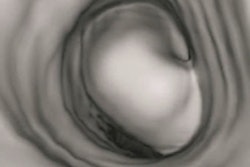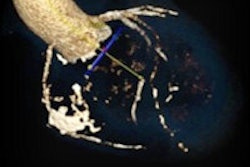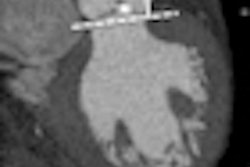
An automated postprocessing software application shows promise for improving the preoperative assessment of patients undergoing transcatheter aortic valve implantation (TAVI), a team of Paris researchers reported in JACC: Cardiovascular Interventions.
A research group from Institut Cardiovasculaire Paris found that automated multidetector CT (MDCT) postprocessing software could reliably and reproducibly measure the aortic annulus in patients undergoing TAVI. It also bested manual assessment in predicting postprocedural aortic regurgitation (AR), a common occurrence after TAVI.
"This software standardizes all MDCT images postprocessing and should prompt widespread use of automated MDCT assessment of aortic annulus in patients undergoing TAVI," wrote the team led by Dr. Yusuke Watanabe.
While TAVI has become a viable option for treating patients with severe symptomatic aortic stenosis that aren't good candidates for conventional surgical aortic valve replacement, residual paravalvular AR is a frequent occurrence after TAVI. Since valve undersizing caused by underestimation of the annulus size is the main cause of paravalvular AR, it's crucial to accurately measure annulus size to select the appropriate valve size and for minimizing residual paravalvular AR, according to the authors (J Am Coll Cardiol Intv, 14 August 2013).
The research team sought to evaluate the accuracy and reliability of MDCT postprocessing software (3mensio Valves, version 5.1.sp1, Pie Medical Imaging) for assessing patients with severe aortic stenosis undergoing TAVI. They also wanted to determine the predictive value of aortic annulus measurements produced by the automated software for postprocedural AR.
The study included 105 patients undergoing MDCT screening prior to TAVI. After manual annulus assessment was performed by two experienced cardiac CT observers on an offline, dedicated postprocessing workstation (EBW, Philips Healthcare), the same MDCT images were retrospectively processed by two less-experienced interventional cardiac fellows on the automated postprocessing software.
In the 44 recipients who received a self-expanding valve, the automated software demonstrated good concordance with manual MDCT measurements. It was also equally as reproducible as manual measurement, especially for measurement of aortic annulus area (intraobserver intraclass correlation coefficients 0.98 vs. 0.97, interobserver 0.98 vs. 0.95), according to the authors.
Furthermore, they reported the automated software's valve diameter/CT-measured geometric mean annulus diameter ratio demonstrated moderate and better discrimination ability for predicting postprocedural AR in comparison with manual measurements (p = 0.12, area under the curve 0.77, 95% confidence interval: 0.63 to 0.91, area under the curve 0.68, 95% confidence interval: 0.50 to 0.86, respectively).
Even though the automated measurements were performed by less-experienced observers, the software yielded accurate measurements and similar or better inter- and intraobserver agreement compared with manual measurement by experienced observers, according to the researchers.
"Owing to its reproducibility across readers of varying experience, the automated MDCT postprocessing software has the potential to be particularly useful as TAVI becomes increasingly used in new centers," the authors wrote. "Even in experienced centers, this automated software should contribute to the improvement of the time/efficiency ratio for pre-TAVI analysis."


















